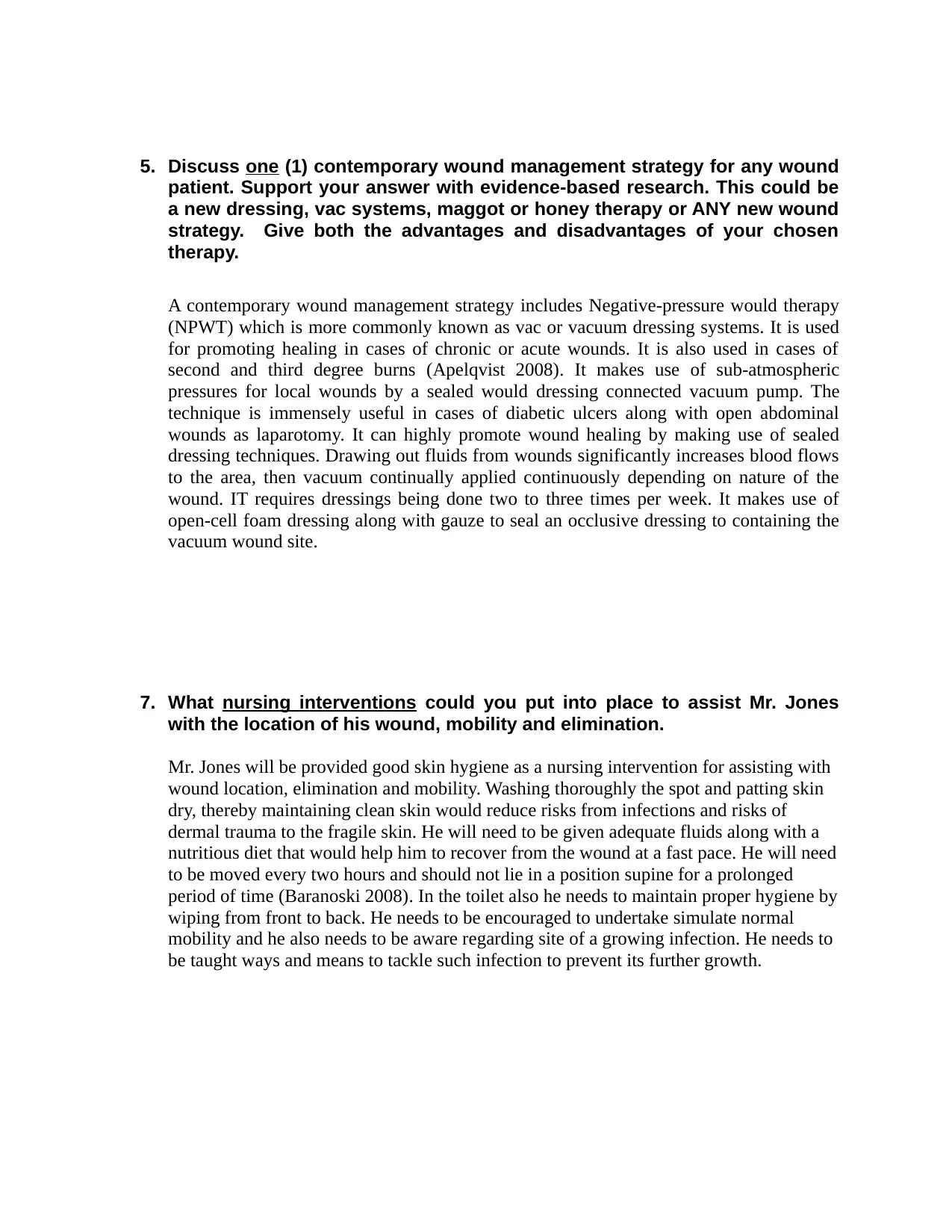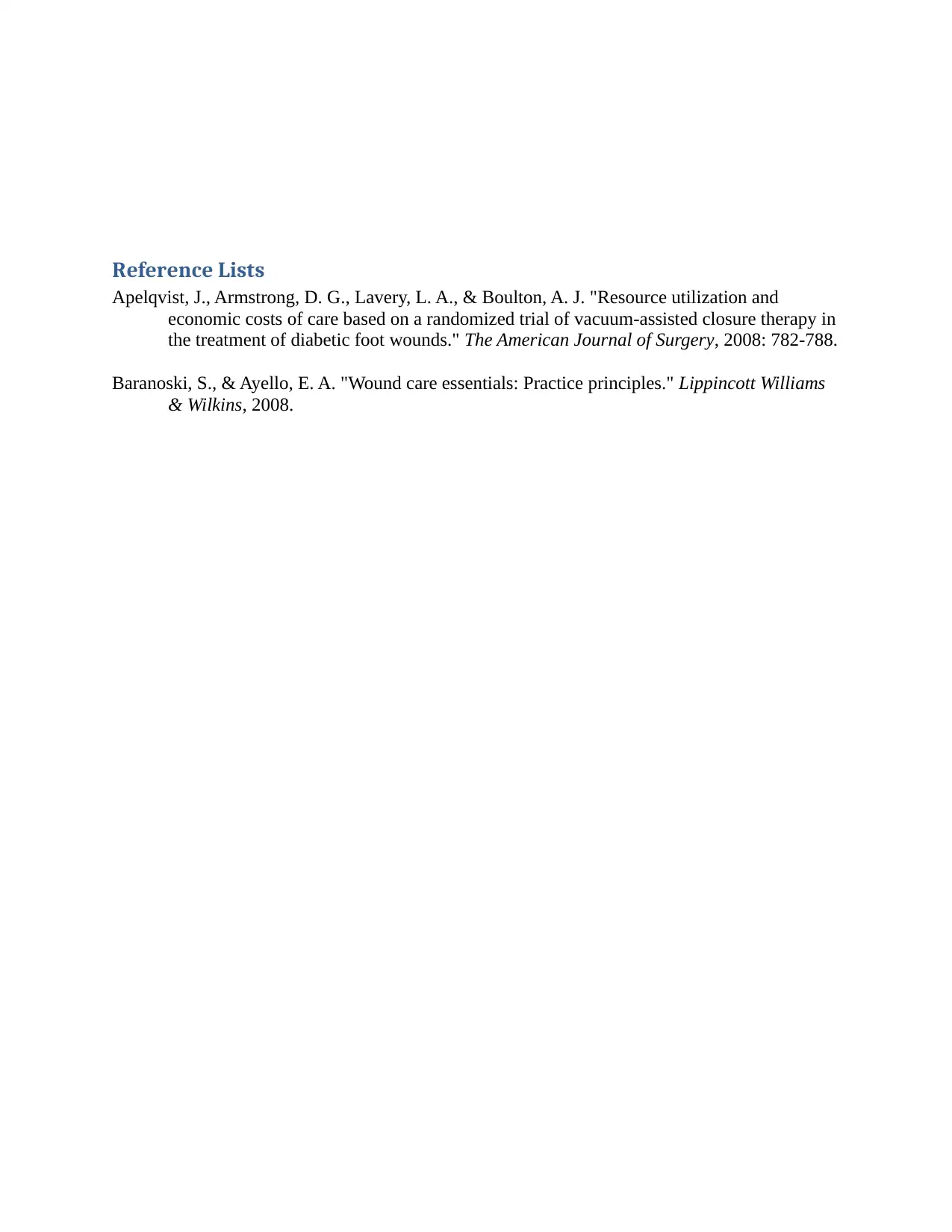Advantages and Disadvantages of Vacuum Dressing Systems in Wound Care
VerifiedAdded on 2020/04/21
|2
|487
|207
Homework Assignment
AI Summary
The assignment explores Negative-Pressure Wound Therapy (NPWT), commonly known as vacuum or vacuum dressing systems, used in promoting healing for chronic or acute wounds and burns. NPWT employs sub-atmospheric pressures to enhance blood flow and remove fluids from the wound area using sealed dressings connected to a vacuum pump. It shows significant benefits in treating diabetic ulcers and open abdominal wounds like laparotomy by increasing local circulation through continuous application based on wound type. However, it requires frequent dressing changes (two to three times weekly) and involves techniques like open-cell foam dressings with gauze for an effective occlusive seal around the wound site. Additionally, nursing interventions for a patient named Mr. Jones are discussed, focusing on maintaining good skin hygiene through thorough cleaning, encouraging mobility by repositioning every two hours, ensuring proper nutritional intake, and implementing measures to avoid infections. These interventions aim to expedite recovery while minimizing risks of infection or further skin damage.
1 out of 2








![[object Object]](/_next/static/media/star-bottom.7253800d.svg)